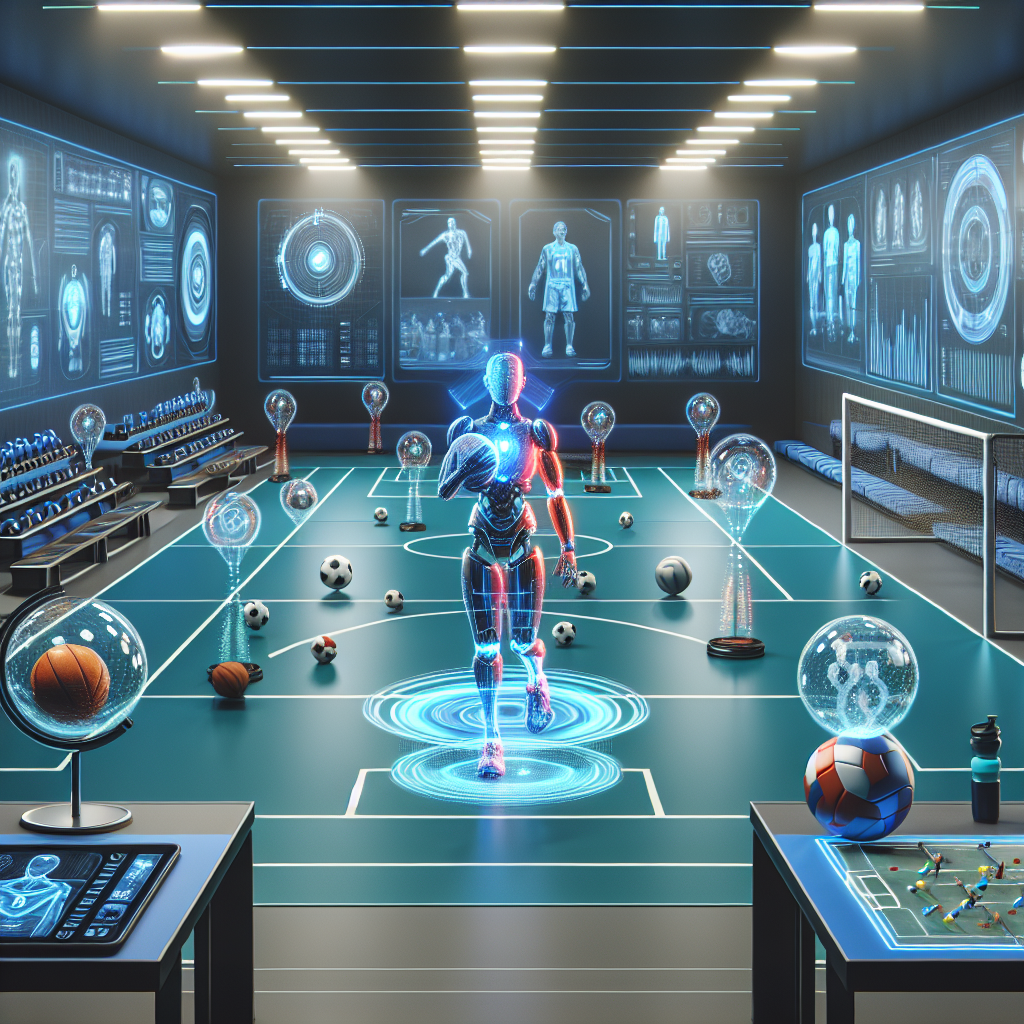Artificial Intelligence (AI) has been rapidly transforming various industries, and the world of sports training is no exception. With the development of virtual sports training environments powered by AI, athletes now have access to innovative tools that can enhance their performance, improve their skills, and optimize their training routines. These virtual environments offer a realistic and immersive experience that simulates real-world scenarios, allowing athletes to practice and refine their techniques in a controlled and safe setting.
AI technology plays a crucial role in the development of these virtual sports training environments by providing intelligent algorithms that can analyze data, predict outcomes, and provide real-time feedback to athletes. By incorporating AI into virtual training platforms, coaches and athletes can gain valuable insights into their performance, identify areas for improvement, and tailor their training programs to meet specific goals and objectives.
One of the key advantages of virtual sports training environments powered by AI is the ability to personalize training programs based on individual athlete’s needs and capabilities. AI algorithms can analyze data collected from sensors, cameras, and other tracking devices to assess an athlete’s performance and provide customized feedback and recommendations. This personalized approach allows athletes to focus on areas that need improvement, track their progress over time, and make adjustments to their training routines accordingly.
Moreover, virtual sports training environments offer a safe and controlled environment for athletes to practice and refine their skills without the risk of injury. By using AI technology to simulate real-world scenarios, athletes can engage in realistic training exercises and drills that mimic game-like situations, allowing them to develop their skills and techniques in a challenging yet safe environment.
In addition, virtual sports training environments powered by AI can also enhance the coaching process by providing coaches with valuable insights and analytics to monitor and evaluate their athletes’ performance. AI algorithms can analyze vast amounts of data in real-time, identify patterns and trends, and generate reports that can help coaches make informed decisions about their athletes’ training programs.
Furthermore, virtual sports training environments can also offer athletes the opportunity to train with and compete against virtual opponents, providing a competitive edge and helping them prepare for real-world competitions. By simulating game-like scenarios and challenging opponents, athletes can improve their strategic thinking, decision-making skills, and mental toughness, ultimately enhancing their performance on the field or court.
Overall, AI-powered virtual sports training environments have the potential to revolutionize the way athletes train and prepare for competitions. By harnessing the power of AI technology, athletes can access advanced tools and resources that can help them optimize their performance, improve their skills, and achieve their full potential.
FAQs:
Q: How does AI technology enhance virtual sports training environments?
A: AI technology provides intelligent algorithms that can analyze data, predict outcomes, and provide real-time feedback to athletes. This allows coaches and athletes to gain valuable insights into their performance, identify areas for improvement, and tailor their training programs to meet specific goals and objectives.
Q: Can virtual sports training environments help prevent injuries?
A: Yes, virtual sports training environments offer a safe and controlled environment for athletes to practice and refine their skills without the risk of injury. By using AI technology to simulate real-world scenarios, athletes can engage in realistic training exercises and drills that mimic game-like situations, allowing them to develop their skills and techniques in a challenging yet safe environment.
Q: How can AI technology personalize training programs for athletes?
A: AI algorithms can analyze data collected from sensors, cameras, and other tracking devices to assess an athlete’s performance and provide customized feedback and recommendations. This personalized approach allows athletes to focus on areas that need improvement, track their progress over time, and make adjustments to their training routines accordingly.
Q: Are virtual sports training environments suitable for all sports?
A: Virtual sports training environments can be adapted to various sports, including basketball, soccer, tennis, and golf, among others. The key is to tailor the virtual environment to mimic the specific requirements and challenges of each sport, providing athletes with a realistic and immersive training experience that can help them improve their skills and performance.

